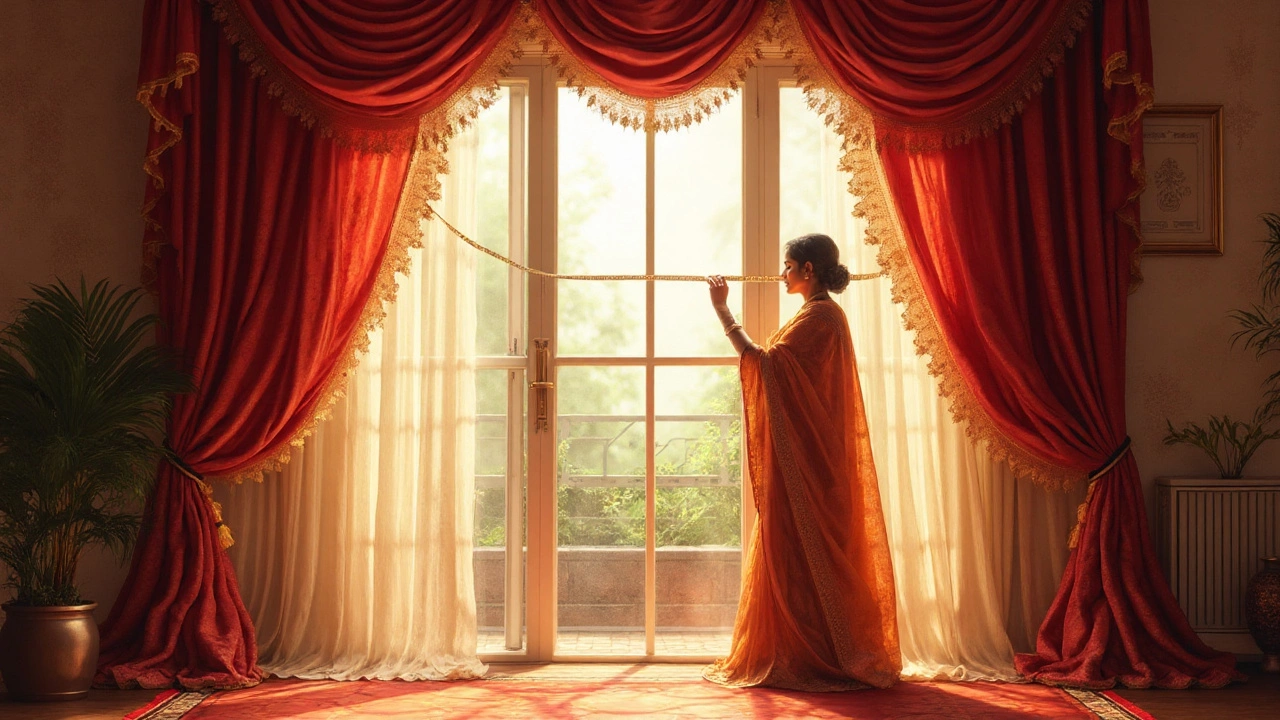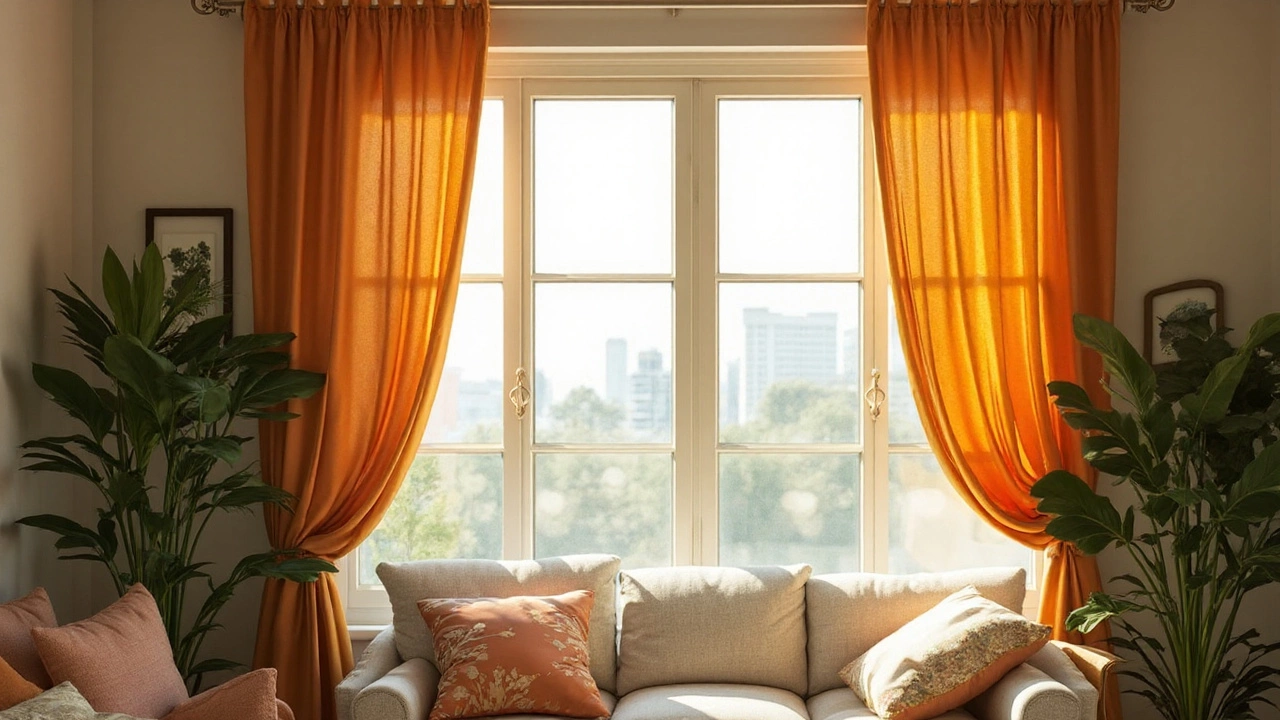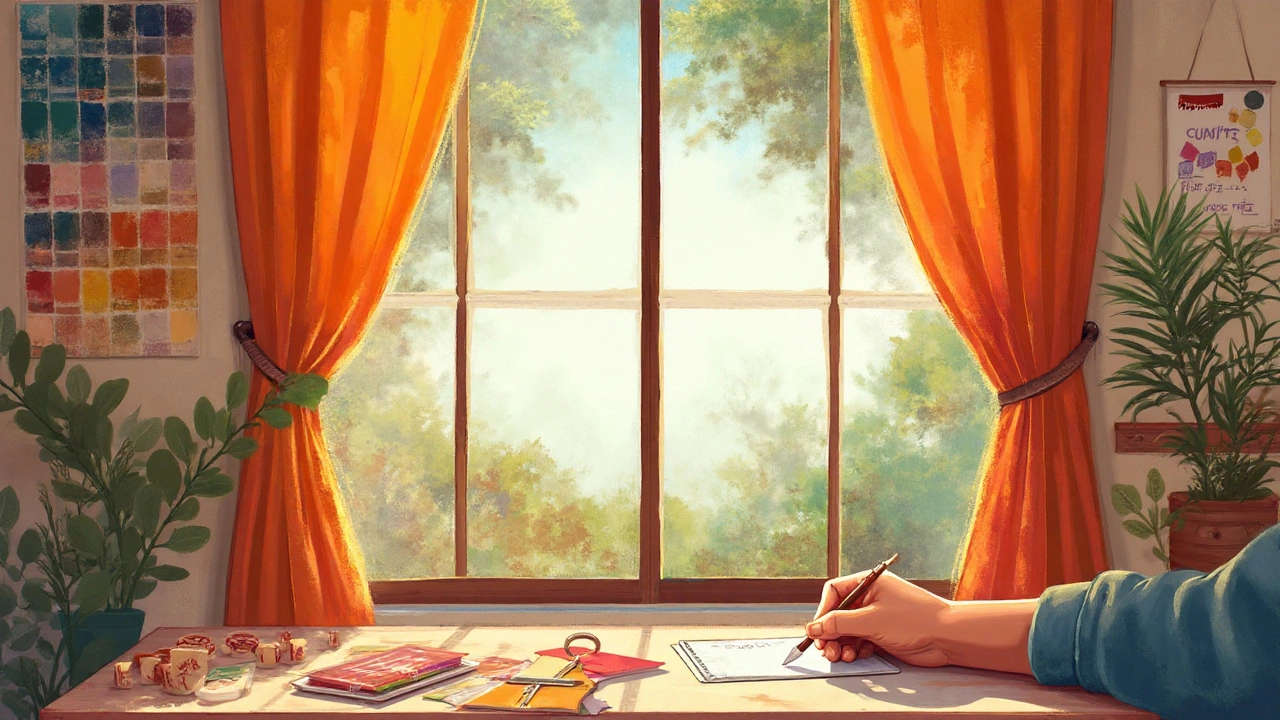Curtain Width Guide for 72 Inch Windows: How to Get the Perfect Fit

The wrong curtain width can wreck the vibe of a room faster than a leaky tap. Ever seen somebody’s living room with curtains that just dangle straight, like two sheets hung on strings? It’s a bit tragic. Nobody wants to spend all that cash on lovely fabric, only for it to look like a last-minute job. Here’s where windows measuring 72 inches wide really keep you on your toes. They’re a proper challenge, with enough width to turn people either wildly creative or oddly cautious. Mess this up, and your lounge can end up looking like an empty shopfront or, just as bad, a closed-off cave. Why do folks get so flustered about curtain sizes, especially with big windows? Turns out, there’s a mix of maths, style, and one or two home truths. If you want curtain panels that hang just right—no annoying gaps, no sagging, and definitely no ‘hospital-room-chic’—there are a few things you should have in your toolbox.
Understanding Curtain Sizing: Why Width is Trickier Than You Think
First up, window width is not the same as curtain width. Loads of people get caught out here—it seems logical to match the width of the window. But if you do that, the moment you pull the curtains closed, you get a flat, stiff look. Not cosy. Not full. Complete flop. To avoid that sad-hotel-room effect, curtain panels need to be quite a lot wider than the window itself. The trick is called ‘fullness.’ It’s all about making the fabric look rich, layered, and tailored, rather than stretched like clingfilm over the glass. Interior designers have a simple rule: curtain width should be 1.5 to 3 times the window’s width, depending on how much fullness you want. For most homes, twice the window width is the sweet spot—that’s where you get smooth, generous folds without drowning in fabric.
So, for a curtain width for 72 inch window, you’re aiming to cover 72 inches—but you want the total width of all your curtain panels put together to be 144 inches (that’s 72 x 2). Go for 1.5 times if you like a sleeker, more tailored look (108 inches total), or crank it up to three times (216 inches) if you dream of dramatic theatre-style drapes. Most folks stick to double.
You probably also need to decide whether you’re running with two panels or more. For a 72-inch window, two panels is the classic choice: each panel should measure about 72 inches wide, making a total of 144 inches. If you’ve found pre-made panels that’re only 50 inches wide, you might want to use four panels (each 50 inches), so you reach the magical 200-inch fullness without buying custom. Pay attention to whether your panels are measured ‘flat’ or ‘gathered’—this makes a huge difference. Ready-made panels are almost always measured flat, so you can work it out pretty easily.
Why not just eyeball it and hope for the best? Because light gaps and weird bunching at the sides rise up to haunt you every evening. If you have blackout needs, like for a bedroom, those gaps will let in rogue light and ruin your lie-in. If you’ve got big plans like puddled curtains, you’ll need even more width than you first thought. Here’s a handy trick: lay out an old bedsheet across your curtain rod to quickly test how much fabric looks generous vs. stingy. This hack has saved many a marriage and living room.
It helps to know: the average windows in the UK are between 36 to 48 inches wide in typical semi-detached homes. That’s much narrower than 72 inches! So, many curtain panels from standard high street brands are made for those smaller sizes. This is why shoppers with big modern windows end up confused, mixing and matching panels or quietly cursing the big DIY brands.
| Window Width | Fullness (1.5x) | Fullness (2x) | Fullness (2.5x) |
|---|---|---|---|
| 72 inches | 108 inches | 144 inches | 180 inches |
| 60 inches | 90 inches | 120 inches | 150 inches |
| 48 inches | 72 inches | 96 inches | 120 inches |
This table breaks down how wide your curtain panels should be, depending on how much plushness you want. Big, bold windows like 72 inches really benefit from that 2x to 2.5x range if you want a super-rich look.

Picking Curtains That Actually Fit: Real-World Measurements, Panels, and Styles
Let’s talk about how to actually make your choices, since there are a load of numbers floating around. First thing: measure your window’s width from edge to edge. Don’t include the trim, unless your curtain rod is hung wider than the window frame. Speaking of rods, it’s best to hang your rod wider than the frame—6 to 12 inches on either side if you’ve got the wall space. This isn’t just about looks; wider rods mean your curtains stack back properly and let in the most light. For a 72-inch wide window, your rod might run 84 to 96 inches across, making the window feel bigger and stopping those awkward ‘cropped’ curtains.
Once you’ve got your rod set up, add up the full width you want to cover (using that 2x formula), and hunt for panels. Curtain panels in the UK usually come in widths of about 46, 54, or 66 inches per panel. Unless you like the skinny look, you’ll need at least two panels, or sometimes four, to hit your 144 inches of coverage for a 72-inch window. Double check if you want your curtains to actually close all the way in the middle—sounds daft, but people sometimes skip this and are left with a 2-inch gap right above their telly.
Let’s break down panel combos, since this is where stuff gets tangled. If you snag a pair of 66-inch wide panels, drawn together you’ve got 132 inches of width—not quite the target 144 inches. You could round up and use two pairs (four panels at 66 inches each, which equals a whopping 264 inches), but that’s plush to the max and might swamp a smaller lounge. If 54-inch panels are more your style, three panels would get you to 162 inches—a happy medium. The trick is not to fuss over being exactly to the inch; the extra fullness adds depth and luxury. If you just can’t find wide enough panels, get clever and layer sheers behind, or add a single narrow panel to each side for a cool, layered look.
What about fabric types? Different fabrics hang differently. Heavy velvets look lush but stack back in big, dramatic folds—which need lots of width. Linens and cottons are breezier, so you might get away with the lower end of the fullness scale. If you’ve got patterned curtains, keep the width generous so the print doesn’t look squashed—otherwise, that lovely paisley ends up looking like you’re peering at it through a letterbox.
Eyelet, pencil pleat, tab top—these all affect how much width you should go for. Eyelet curtains lose a bit of width in each fold, so if you want deep pleats and proper privacy, don’t skimp. Pencil pleat lets you control the gathering, so you can get more body if you like, but you’ll still need that 2x width rule to make sure the coverage is right. Tab tops have a more casual hang and can end up looking sparse if the fabric isn’t wide enough. For blackout curtains, always choose extra width to block gaps where light sneaks in at dawn—especially if you live in Manchester, where summer sun is up too early for anyone’s liking.
And here’s a tip: buy a little extra width if you’ve moved into a new place and not finished decorating. Laying out big, full curtains (even if they reach past the window) makes the room instantly look more ‘done’, plus you can always tailor them back later. If you can’t sew, professional alteration shops can trim down panels for a tenner or so each, which is cheaper than custom ordering. If you’ve got odd-sized windows, two pairs of ready-mades and one local tailor can save you an expensive headache.

Visual Tricks, Common Mistakes, and Extra Curtain Tips
Now into the fun stuff: little-known tricks that home stylists swear by. Always run your tape measure along the top where your rod will sit, not at the bottom of the window. A sloped ceiling, old terrace, or uneven wall can throw your numbers off. If you want your curtains to hang to the floor, always add an extra inch so they ‘break’ softly at the bottom. For floor-length drama, let them puddle by 4 to 6 inches—the ultimate plush look, especially with velvet. But if you’ve got pets or kids (or just hate hoovering), stick with curtains ‘kissing’ the floor instead.
If your window is in a dark spot, using two sets of lighter, semi-sheer curtains instead of main panels can double the look without draining your wallet. Tuck a simple blackout blind behind for nighttime, but let the daylight bounce around: trickier in the UK’s grey winters, but every bit helps. Another smart move? Mount your curtain rod up near the ceiling, not just above the window frame—it makes ceilings look higher and rooms more open. With modern homes being built with lower ceiling heights, this hack feels like finding secret extra space. Got a radiator under your window? Consider a sill-length curtain instead, and add a lightweight blind for privacy. Long curtains bunching up and trapping heat are a real pain in winter.
Avoid the rookie mistake of under-buying. No matter how much the salesperson promises, curtains that just ‘meet’ in the middle never look right. If you’re in doubt, go wider—excess fabric tucks away, but too little fabric is impossible to fix. If you end up with too much width, you can always move your rod a little to stretch out the look, let your curtains stack off the window, or experiment with layered panels. Living in a rented place? Adjustable tension rods and lighter curtain weights make it easy to swap panels for different looks without drilling. Landlords usually prefer this over mystery holes!
If you have a 72-inch window but your wall is much wider, consider extending your rod even more and letting your curtains stack fully off the glass when open—it brings in loads more light. This is especially handy in Manchester, where daylight is precious for three-quarters of the year. If you want a really modern, slim look, sheers and linen panels just touching the frame can look chic, but you’ll lose the drama and light-blocking you get from bigger panels.
If you love a put-together home, match your curtain widths to your other soft furnishings—wide curtains look right at home with deep sofas and layered throws. Bonus: double width panels with blackout lining not only help with lie-ins, but also with energy bills, since they keep draughts at bay. According to a study by the UK’s Energy Saving Trust, lined curtains can cut heat loss from single-glazed windows by up to 21%—not bad for a stylish upgrade.
So, for a 72-inch wide window, aiming for 144 inches of combined curtain width makes your drapes look intentional, plush, and, honestly, a bit luxurious—exactly what that big, bold window deserves. Don’t let ready-made sizing or odd window shapes throw you off. Take the time to measure, double up on panels if you need to, and throw in a little creative flair. Your living room will thank you, and you’ll never suffer that underwhelming, hotel-y look again.